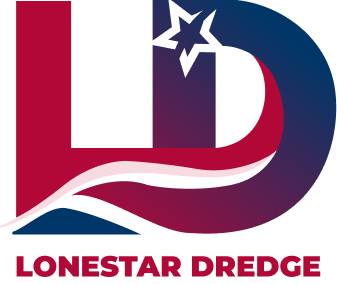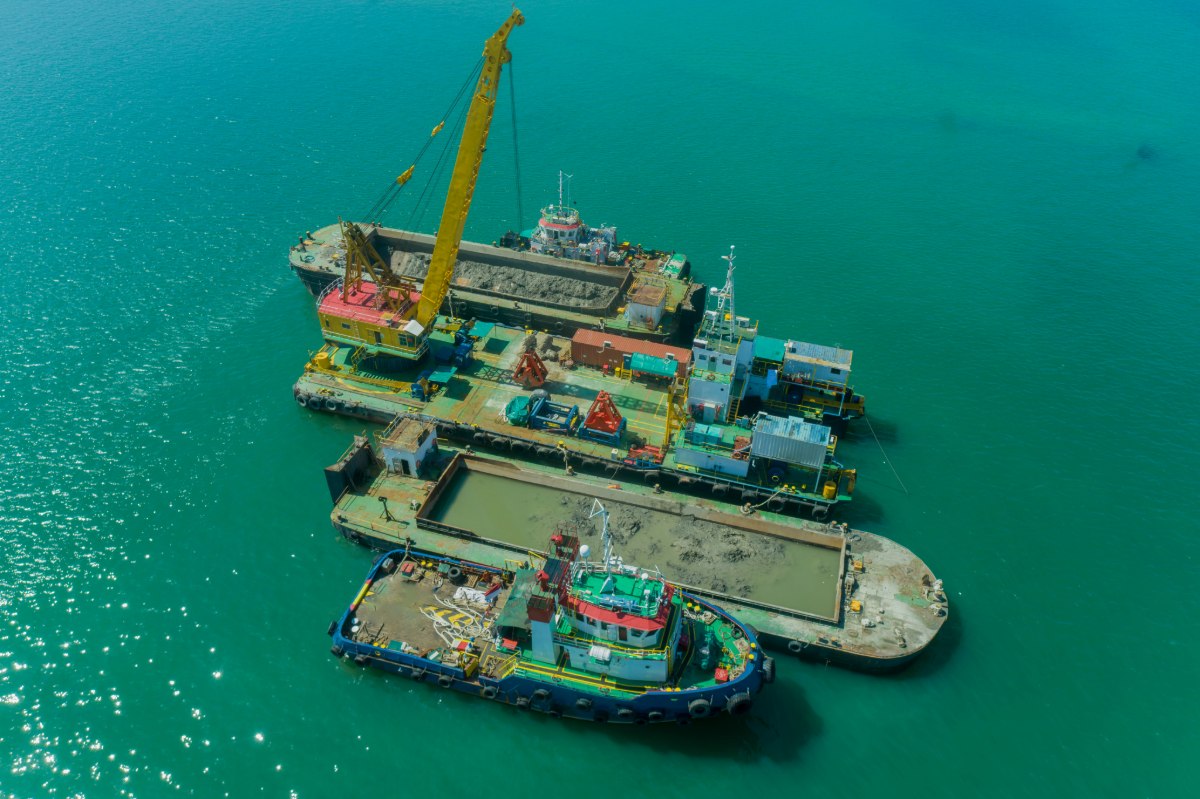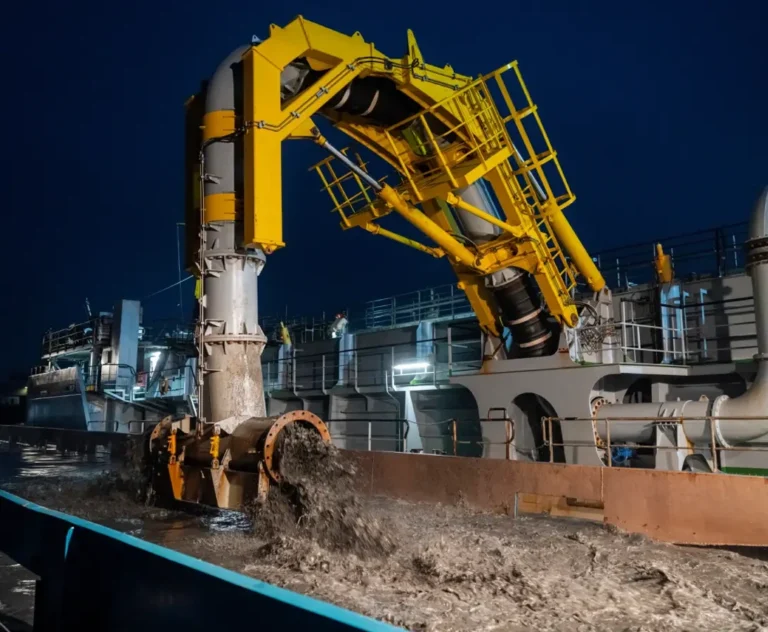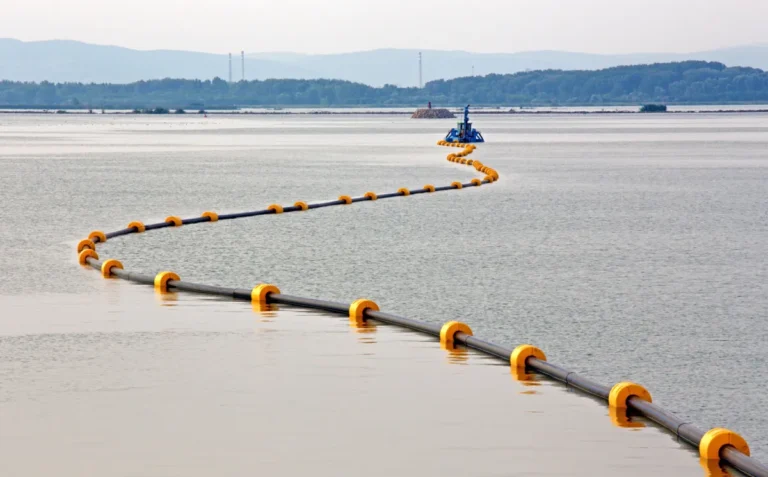Designing a stable and efficient dredging platform requires more than simply assembling a floating structure; it demands careful engineering that accounts for hull form, load distribution, power integration, and long-term durability. Whether it is a dredge platform operating in inland waterways or a larger dredge barge tackling coastal projects, every design choice influences stability, safety, and productivity. By focusing on structural integrity, hydrodynamics, and adaptability, engineers can build dredging platforms that perform reliably under diverse and challenging conditions.
Hull Form and Structural Design Choices for a Dredging Platform
The hull design is one of the most critical factors in ensuring the stability and efficiency of a dredging platform. A well-engineered hull not only supports heavy dredging equipment but also provides the structural integrity needed for continuous operation in demanding marine environments. When selecting the hull form for a dredge platform or dredge barge, three key considerations come into play: geometry, reinforcement, and material durability.
Flat-Bottom vs. Pontoon-Style Hulls for Dredge Barges
Flat-bottom hulls are often favored for shallow-water dredging projects, as they provide maximum stability and load-bearing capacity in calm conditions. These designs allow the dredging platform to maintain an even draft, making it easier to install spuds and anchoring systems. However, flat-bottom hulls may experience more resistance in open waters with waves or currents.
Pontoon-style hulls, by contrast, are built with multiple segmented pontoons that distribute weight across the structure. This design is particularly useful for modular dredge platforms that need to be transported, assembled, or adjusted for different project sizes. The pontoon approach also offers more flexibility in adjusting buoyancy and balance during operations, making it a reliable option for both inland and coastal dredging applications.
Reinforcement Strategies for Heavy Dredging Equipment
A dredging platform must be reinforced to handle concentrated loads from pumps, cutterheads, winches, and hydraulic systems. Reinforced deck framing, thicker cross members, and localized stiffeners are commonly used to manage stress points where equipment is mounted. Additionally, integration of spud wells and heavy-lift cranes requires additional strengthening of the hull structure. Without proper reinforcement, a dredge barge risks structural fatigue and costly downtime due to equipment-induced vibrations and loads.
Material Selection for Long-Term Durability
The choice of material directly impacts the service life of a dredging platform. Marine-grade steel remains the industry standard, with higher-strength steel grades selected for areas exposed to extreme stress. Anti-corrosion coatings and epoxy-based paints are critical for protecting against constant water exposure, abrasion from sediments, and saltwater corrosion in coastal projects. Some dredge platforms may also integrate sacrificial anodes or advanced polymer coatings to extend lifespan further and reduce maintenance cycles.
Load Distribution and Ballasting Systems: Balancing the Dredge Platform
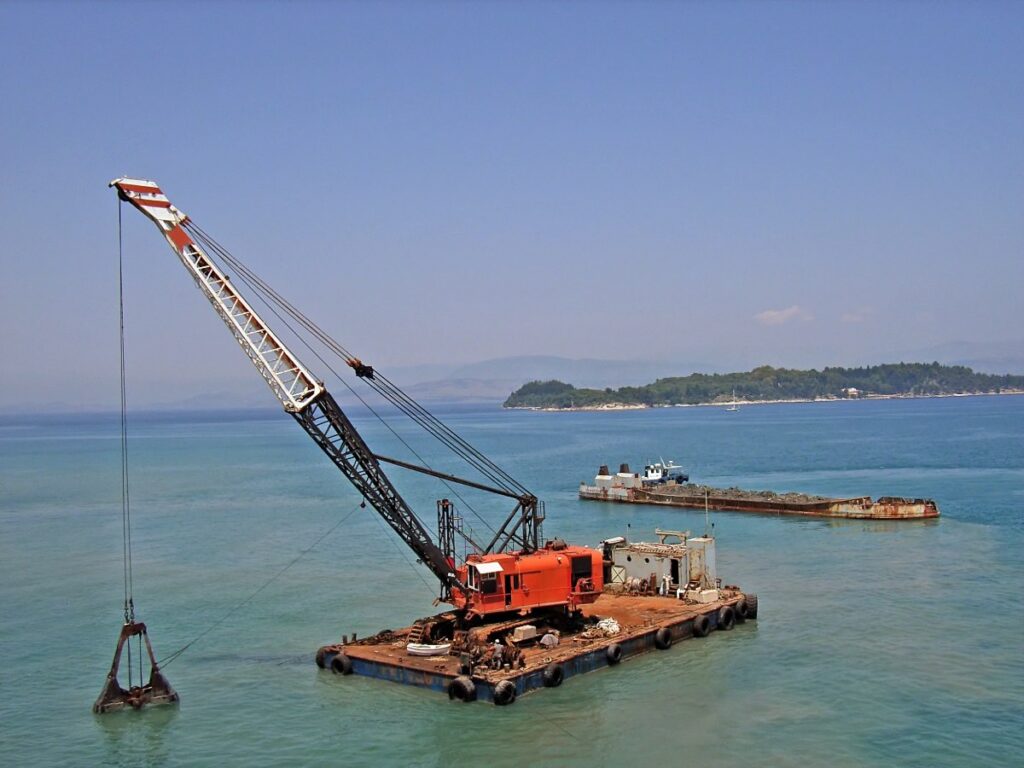
Effective load distribution is essential to the structural integrity and operational efficiency of any dredging platform. Heavy machinery such as dredge pumps, winches, and hydraulic power units creates concentrated stress points on deck. If not properly accounted for, these uneven loads can cause structural strain, reduced stability, and even operational hazards.
Ballasting systems play a critical role in correcting these imbalances. By shifting water between ballast tanks, operators can control the trim and heel of the dredge platform in real time. This ensures the dredge barge remains level during pumping operations and resists tilting from uneven sediment loads. Modern ballasting systems often incorporate automated sensors and controls, allowing precise adjustments to counter dynamic forces from waves, currents, and shifting equipment loads.
For larger dredge barges, a well-designed load distribution plan ensures that spud systems and anchoring points operate under uniform conditions. This minimizes excessive wear, prevents structural distortion, and maintains optimal efficiency throughout the dredging process.
Anchoring and Positioning Systems: Holding the Dredge Barge in Place
Stability on water is not only about buoyancy but also about securing the dredging platform in its working location. Anchoring and positioning systems are vital to ensure precise excavation and uninterrupted operation, especially in areas with strong currents or tidal influence.
Spud poles are one of the most common solutions for dredge barges. These vertical steel shafts are lowered into the seabed to pin the dredge platform in place, providing exceptional resistance against drift. Spud systems can be designed as fixed, swinging, or telescopic, depending on the depth and mobility required.
In situations where seabed penetration is not feasible, such as rocky or deep-water environments, mooring systems with anchors and wire ropes are employed. These systems can be integrated with dynamic positioning technology, using GPS-guided thrusters to hold the dredge platform within a tight tolerance.
By combining robust spud systems, mooring strategies, and advanced GPS-based navigation, engineers can ensure a dredge barge remains fixed in its designated working area. This level of stability not only improves dredging accuracy but also reduces downtime caused by repositioning, ultimately improving the efficiency of the overall project.
Power and Propulsion Integration on a Dredging Platform
A reliable power system is the backbone of every dredging platform, ensuring the continuous operation of pumps, cutterheads, winches, and hydraulic systems. The choice of power source and propulsion design directly impacts the performance, fuel efficiency, and adaptability of the dredge platform in varying project conditions.
Diesel vs. Electric Power Systems
Diesel-driven systems remain the most common choice for dredge barges due to their high power output and adaptability in remote locations where grid electricity is unavailable. These systems can be paired with hydraulic circuits to operate dredge pumps and auxiliary equipment, offering robust performance under demanding conditions.
Electric power systems, however, are gaining popularity in regions with access to stable grid power or where emission regulations are strict. An electric-powered dredging platform produces lower noise and vibration, requires less routine maintenance, and aligns with sustainability goals. Hybrid solutions are also emerging, allowing operators to switch between diesel and electric power depending on site requirements.
Hydraulic Power Packs and Onboard Layout
Hydraulic power packs are often integrated into the dredging platform to drive cutterheads, pumps, and positioning equipment. The layout of these systems must consider heat dissipation, vibration isolation, and accessibility for maintenance. Centralized hydraulic circuits improve operational efficiency, while segregated circuits for critical systems reduce the risk of complete shutdowns in the event of component failure.
Auxiliary Propulsion for Maneuverability
While many dredge platforms are stationary during operation, auxiliary propulsion is essential for repositioning between dredging zones or navigating confined waterways. Options include azimuth thrusters, outboard propulsion units, or tug assistance, depending on the size of the dredge barge. Incorporating self-propulsion into the design reduces dependency on support vessels, increases flexibility, and streamlines project logistics.
Vibration, Noise, and Fatigue Considerations in Dredge Platform Design
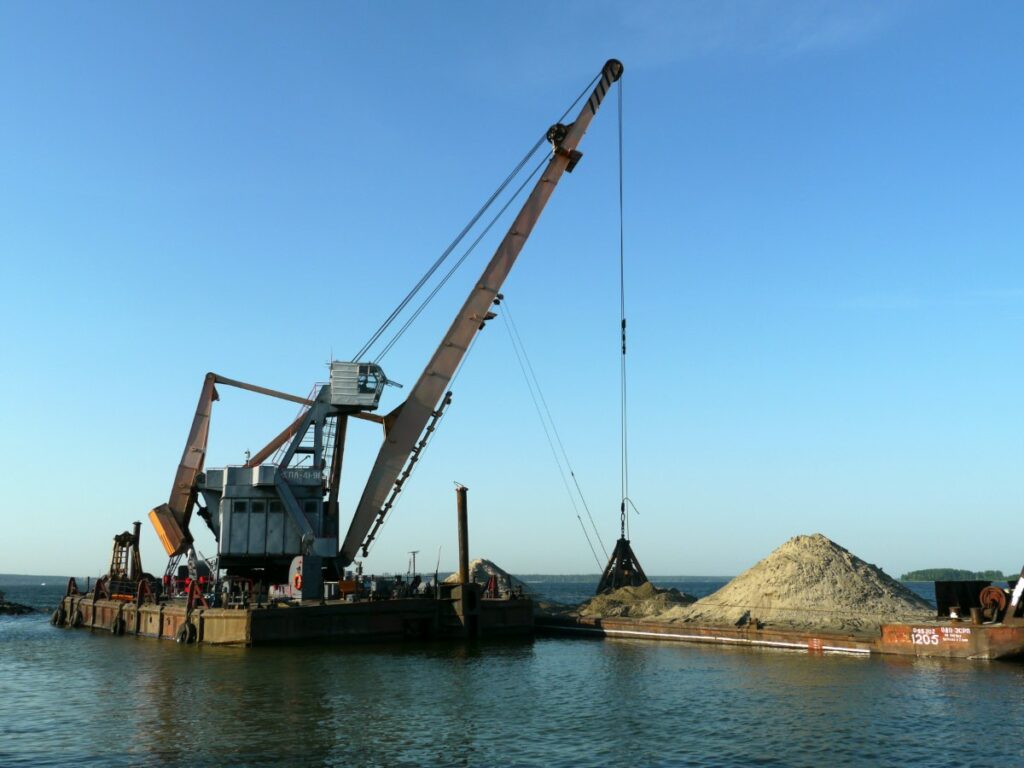
Operating a dredging platform involves significant dynamic forces. Heavy-duty dredge pumps, cutterheads, and winches generate vibration and noise that can lead to structural fatigue and reduced service life if not properly managed.
Structural Stress from Equipment
When mounted equipment, such as dredge pumps and hydraulic power packs, operates at high loads, it transmits vibrations into the hull and deck. Over time, this can cause cracks, weld fatigue, and misalignment of critical components on the dredge barge. To prevent such issues, engineers use reinforced mounting frames, load-distributing foundations, and vibration-damping materials.
Isolation and Noise Control
Noise and vibration isolation systems are essential not only for the longevity of the dredge platform but also for crew safety and comfort. Rubber mounts, shock absorbers, and resilient deck designs reduce the transmission of harmful vibrations. Additionally, acoustic insulation helps control noise levels, particularly in enclosed machinery spaces, ensuring compliance with safety and environmental standards.
Long-Term Fatigue Resistance
The continuous cyclic loading experienced by a dredge barge makes fatigue resistance a core design factor. Finite element analysis (FEA) and stress testing during the design stage help identify high-stress areas, allowing reinforcement before deployment. Regular inspections and non-destructive testing methods further ensure long-term platform integrity.
Safety and Accessibility Features Built into the Platform
A dredging platform must prioritize safety without compromising operational efficiency. The presence of heavy machinery, hydraulic systems, and moving parts requires built-in safety measures to protect the crew and ensure smooth operation.
Safe Working Zones and Crew Protection
Designing designated walkways, handrails, and fall-protection systems ensures the crew can safely access all working areas of the dredge barge. Non-slip deck surfaces and protective barriers minimize the risk of accidents in wet and unstable conditions.
Emergency Access and Evacuation
Emergency evacuation routes are critical in case of fire, flooding, or equipment failure. Escape ladders, clearly marked exit pathways, and life-saving appliances must be incorporated into the dredge platform design. Fire suppression systems, spill containment equipment, and emergency shutdown circuits further enhance safety readiness.
Accessibility for Operations and Maintenance
Ease of access to machinery and hydraulic systems reduces downtime and improves operational reliability. Platforms with integrated service walkways, removable panels, and overhead lifting points make equipment maintenance safer and more efficient. For dredge barges operating offshore, provisions for crew transfer and supply delivery also need careful planning.
Hydrodynamic and Environmental Factors in Dredging Platform Stability
The hydrodynamic behavior of a dredging platform directly impacts its stability, efficiency, and safety during operations. Since dredge barges work in a variety of marine and inland environments, platform design must account for wave impact, currents, and environmental conditions that affect both positioning and structural performance.
Wave and Current Dynamics
Shallow-water operations often expose a dredging platform to short-period waves and strong currents. Flat-bottom hulls offer stability in calm conditions but may experience higher slamming forces in rough water. Hydrodynamic modeling during design helps predict platform response and optimize hull geometry to minimize resistance and unwanted motion.
Seasonal and Climatic Challenges
In coastal and riverine projects, seasonal conditions like monsoon surges, ice buildup, or storm waves can reduce dredge barge stability. Designing with higher freeboard, reinforced side plating, and ice-resistant coatings ensures the dredging platform remains operational in harsh climates.
Environmental Compliance
Environmental factors extend beyond hydrodynamics. Minimizing seabed disturbance, controlling sediment plumes, and reducing fuel emissions are increasingly critical considerations. Integrating low-emission engines, efficient pump designs, and controlled discharge systems allows dredge platforms to meet modern regulatory requirements without sacrificing productivity.
Modularity and Adaptability of Dredge Platforms
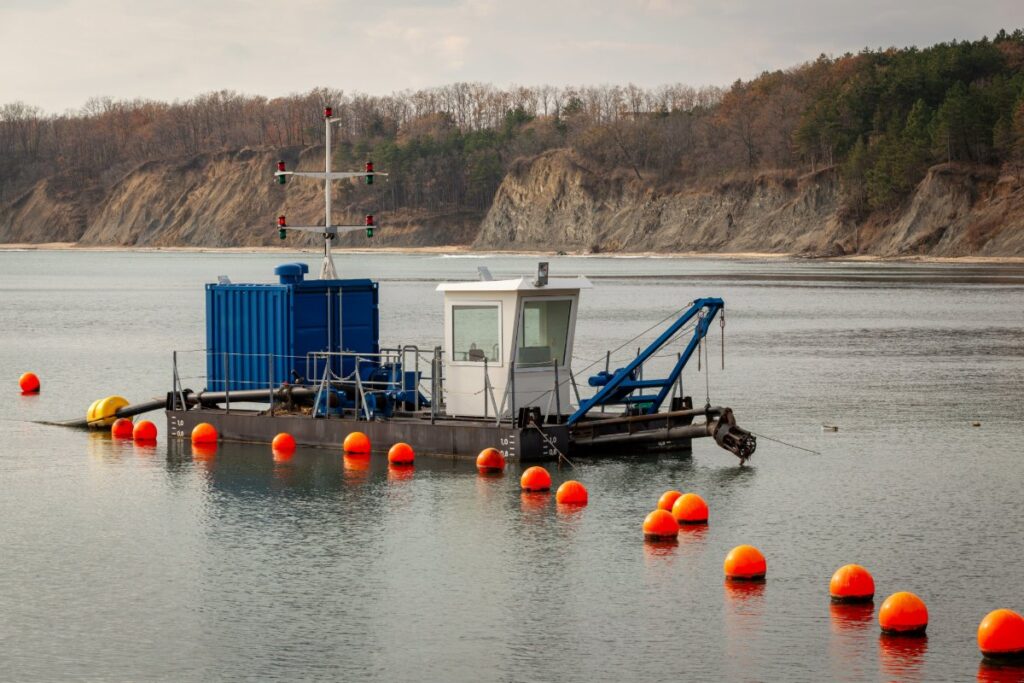
Modern dredging projects demand flexibility. A well-designed dredging platform should not only meet current project needs but also adapt to future requirements. Modularity in design allows operators to scale capacity, integrate specialized equipment, and adjust platform configuration for diverse applications.
Modular Pontoon Configurations
Segmented pontoon-style hulls allow dredge platforms to be transported in sections and assembled on-site. This approach enables quick deployment in remote or inland locations while maintaining the strength and buoyancy of a conventional dredge barge.
Equipment Adaptability
A modular deck layout supports different types of dredging equipment, from cutter suction systems to slurry pumps and winches. By allowing for interchangeable mounting points and reinforced zones, a dredging platform can be reconfigured as project demands change.
Future-Proofing Design
As dredging technology evolves, platforms must accommodate upgrades such as automation systems, hybrid power packs, or larger pump assemblies. Building in spare capacity for weight loads, hydraulic connections, and power distribution ensures the dredge barge can be adapted without costly structural overhauls.
Efficiency Through Smart Automation and Monitoring Systems
Modern dredging operations are increasingly driven by automation, which enhances both the efficiency and reliability of a dredging platform. Integrating intelligent control systems not only reduces manual intervention but also ensures more precise dredging, improved fuel efficiency, and reduced downtime.
Real-Time Monitoring
Equipping a dredging platform with real-time monitoring systems allows operators to track draft, load distribution, dredge pump performance, and hydraulic pressure levels. Sensors and control units provide immediate feedback, enabling quick adjustments to maintain stability and maximize efficiency.
Automated Positioning and Control
GPS-based automation has transformed how dredge barges are positioned during operations. Automated spud control, winch adjustments, and thruster-based positioning reduce human error and keep the dredge platform within precise working tolerances. This is particularly valuable in projects requiring accuracy, such as harbor deepening or pipeline trenching.
Predictive Maintenance and Data Logging
Automation systems also collect operational data that can be used for predictive maintenance. By monitoring vibration levels, hydraulic performance, and power consumption trends, operators can address potential issues before they cause breakdowns. This proactive approach reduces downtime and extends the service life of both equipment and the dredging platform itself.
Cost and Lifecycle Considerations in Dredging Platform Design
Beyond technical performance, the long-term financial sustainability of a dredging platform depends on how well it balances capital investment with operational efficiency and maintenance costs. Lifecycle planning ensures that the dredge barge remains cost-effective throughout years of continuous use.
Balancing Capital vs. Operating Costs
While higher-strength materials, advanced coatings, and automation systems increase initial investment, they reduce long-term expenses by lowering maintenance requirements and extending service intervals. The most efficient dredging platforms are those that optimize this balance between upfront cost and lifecycle savings.
Maintenance and Inspection Schedules
Routine inspections of hull integrity, ballast systems, spud wells, and hydraulic circuits are essential for avoiding costly failures. Incorporating easy-access maintenance zones and modular component design reduces downtime and allows parts to be replaced or upgraded quickly on the dredge barge.
Extending Operational Lifespan
With proper lifecycle planning, a dredging platform can remain in service for decades. Applying corrosion-resistant coatings, integrating sacrificial anodes, and scheduling structural reinforcements ensure that the dredge barge withstands harsh marine environments without premature deterioration.
Designing the Future of Reliable and Efficient Dredge Platforms
A well-designed dredging platform is the foundation of successful dredging operations, balancing stability, efficiency, and lifecycle performance. From hull form and reinforcement to automation and safety systems, each design consideration ensures that the dredge barge can handle demanding environments while minimizing downtime and costs. For operators seeking expert guidance, customized solutions, and proven dredging equipment, partnering with specialists is key. To learn more about building and deploying stable, high-performance dredging platforms, visit Lone Star Dredge and explore how tailored dredging solutions can meet the unique demands of your next project.
